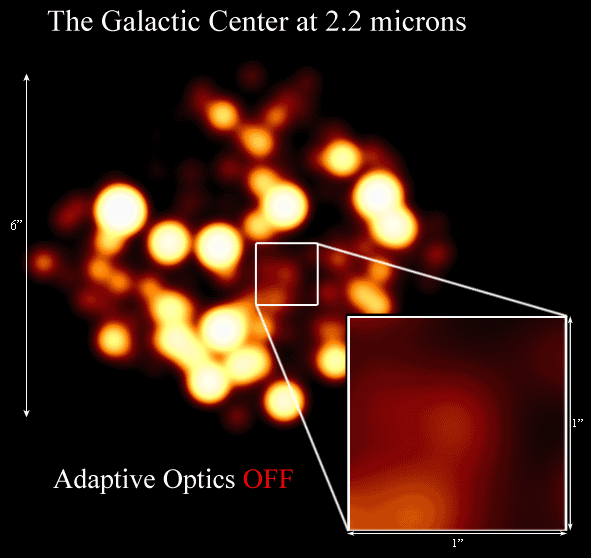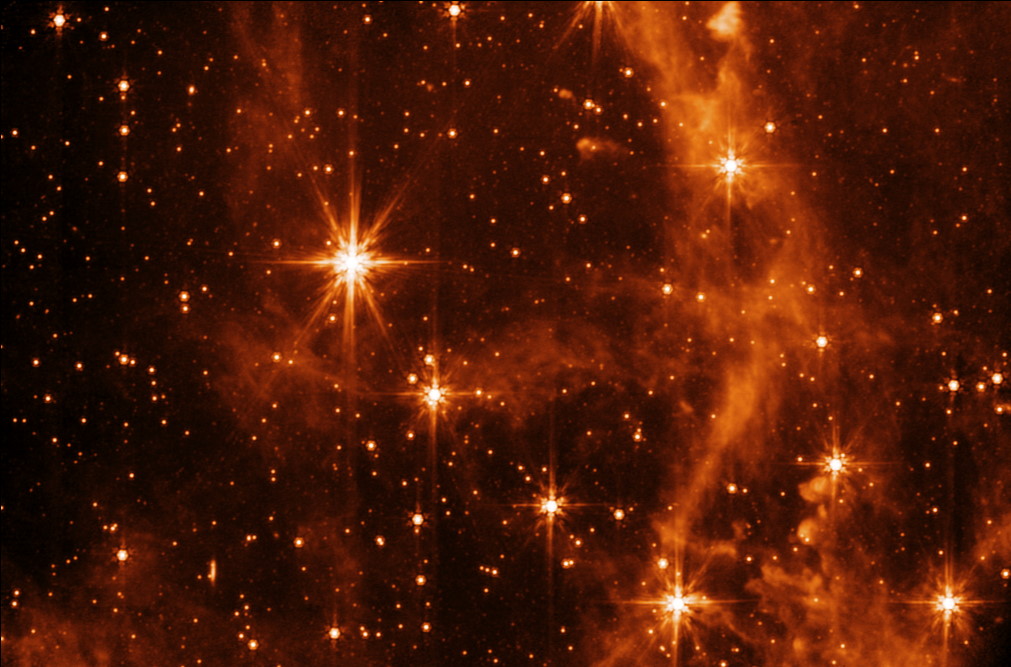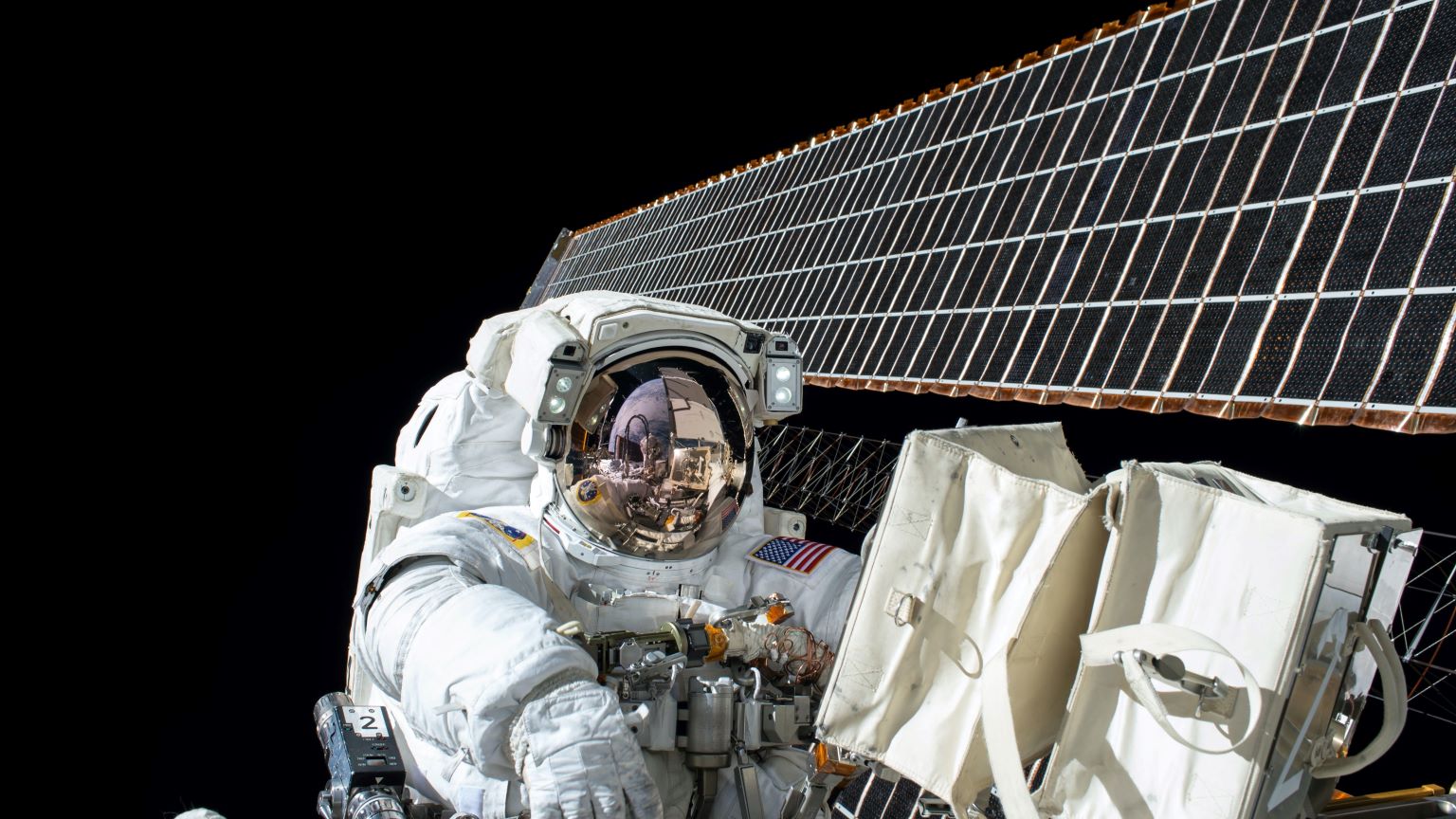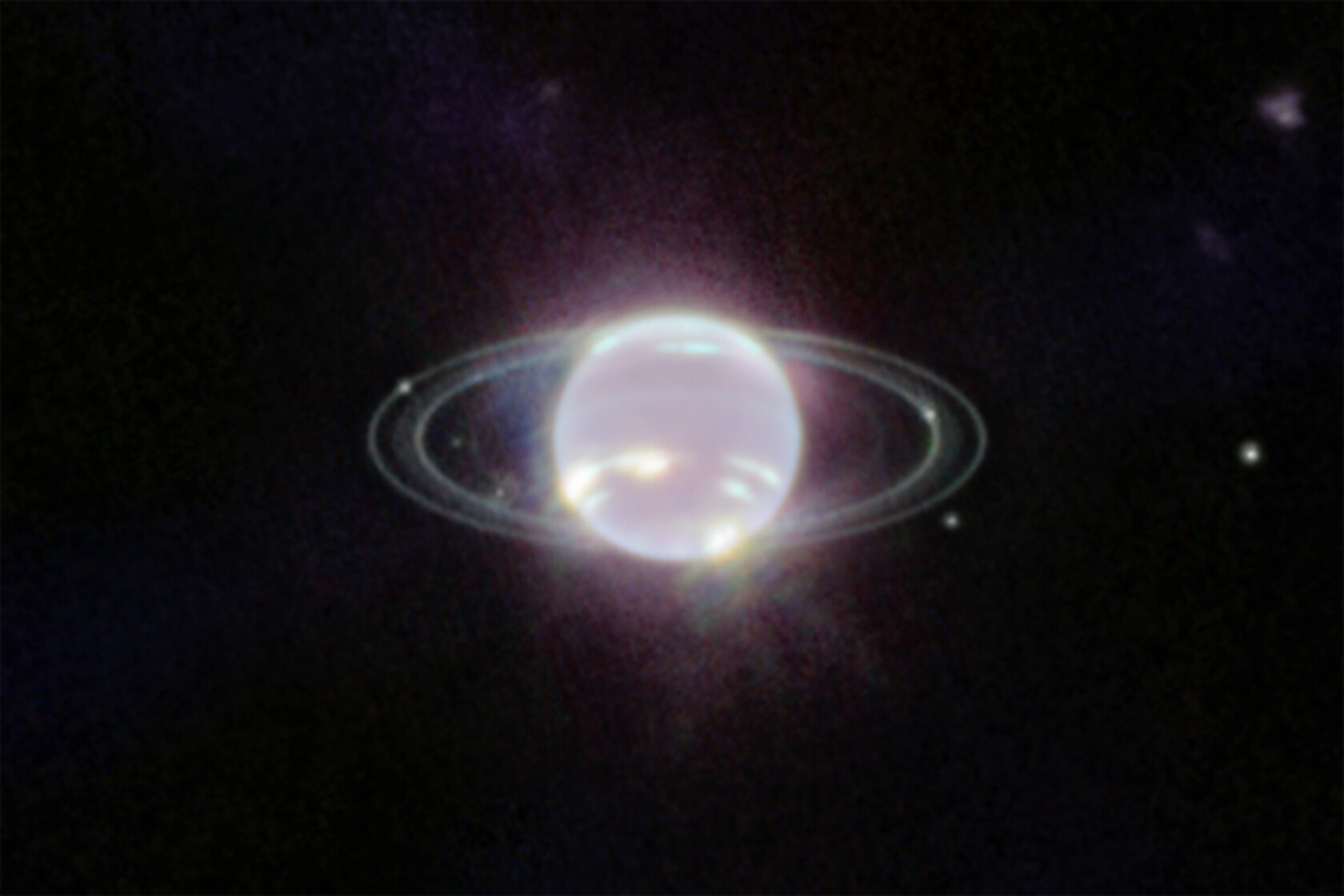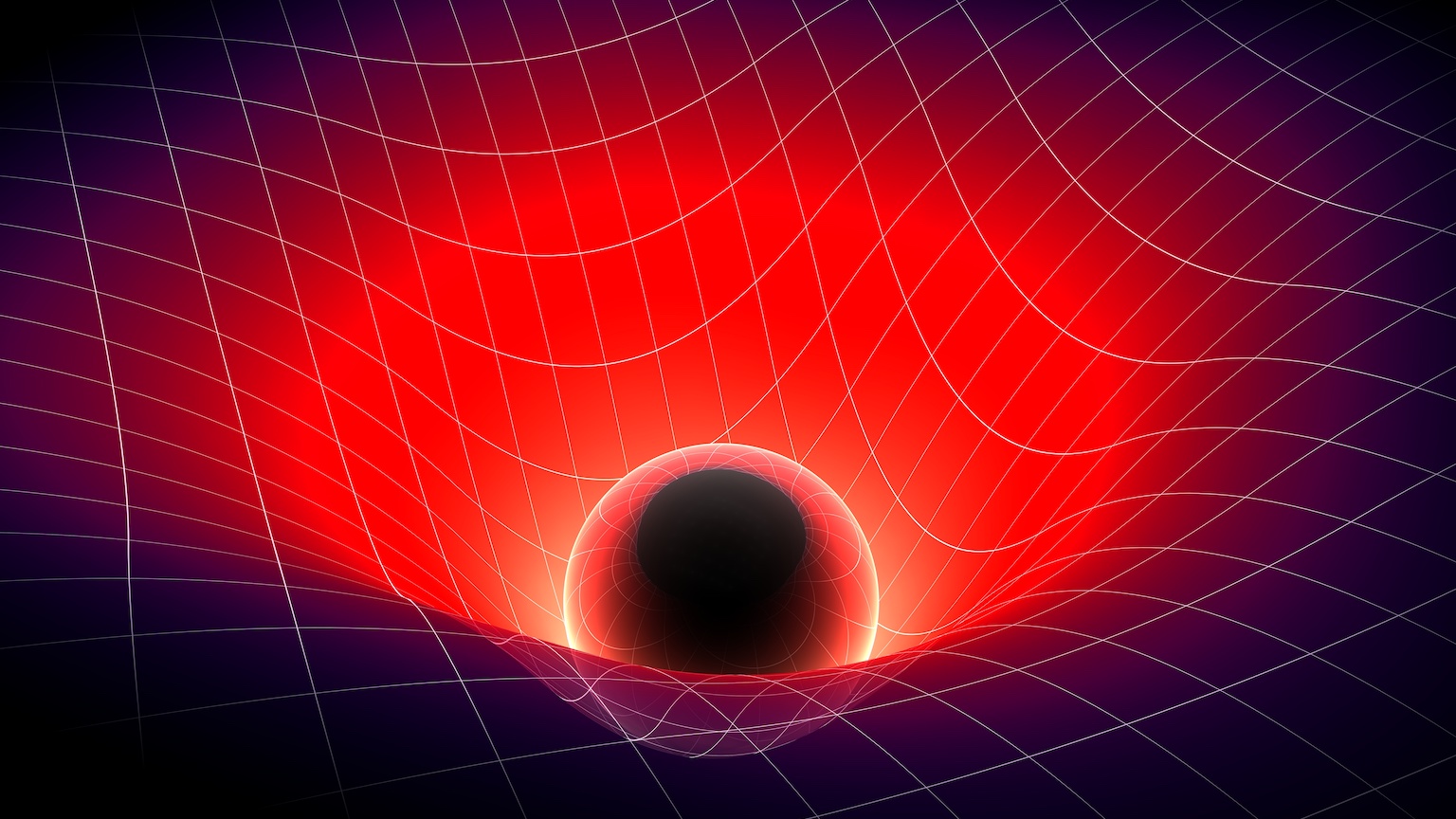Without this genius optical trick, those gigantic telescopes aren’t any better than the one in your backyard

- Air currents in our atmosphere can limit the focusing power of giant telescopes to that of inexpensive amateur models.
- This limitation can be overcome by using mirrors that are continuously and actively warped.
- Adaptive optics can make the image of a celestial object hundreds of times sharper.
The world’s most powerful modern telescopes dwarf the models you might buy to use on your porch. A decent-quality amateur telescope (costing around $1000) has an 8” to 12” mirror. Research telescopes — like Keck in Hawaii, the Subaru telescope next door to Keck, and the Gran Telescopio Canarias in the Canary Islands — range from 327” to 410” in mirror diameter and collect roughly 1,000 times more light than a backyard scope.
The Giant Magellan Telescope (GMT), currently under construction in the Atacama Desert in Chile, will have seven 330” mirrors, allowing it to collect 7000 times more light than an amateur device. However, each of these telescopes needs adaptive optics (AO) to exercise their size advantage over the humble backyard telescope. Why?
By collecting so much light, a giant telescope is capable of using high magnification to make out extremely small objects. The brighter an image is, the further you can zoom down into it and still have enough light to make things out, but all the brightness in the world doesn’t do you any good if you can’t focus it. The smallest thing a telescope can resolve gets proportionally smaller as the diameter of the main mirror gets bigger. A 400” telescope has 40-times better resolution than the 10” scope. In a perfect vacuum, then, the enormous mirror of the big scope will triumph. On Earth’s surface, things are different.
The constant swirling of the Earth’s atmosphere above the telescope will limit its practical resolution on any given night. Currents of air with different temperature possess different density, slowing and bending the light slightly as it passes through. These pockets move rapidly across the sky, altering the light path in unpredictable ways that shift hundreds of times per second or more. The light from the object you’re looking at is essentially wandering around the sky, moving back and forth as much as a thousand times per second during the exposure time of the image.
The standard measure of how small a width can be seen at distance is the arcsecond (as). One arcsecond (1 as) is the width of a baseball 10 miles away, or a car at 600 miles. A giant 300″-400″ telescope should be able to resolve something as small as about 0.01 to 0.02 as. That’s roughly the width of a baseball at 500 to 1,000 miles away or the distance between home plate and first base if we imagine a ballpark on the moon.
Under average conditions, the jittery atmospheric motion blurs out all passing light and limits us to a resolution of about 1 as, give or take. This is roughly the resolving capability of the amateur 12” scope. Mountaintops and deserts where giant telescopes are built reduce the amount of overhead air to reach as low as 0.2 to 0.5 as on a very good night. Even at these ideal spots, atmospheric turbulence drops the resolving power of a giant telescope by a factor as great as 50 times.
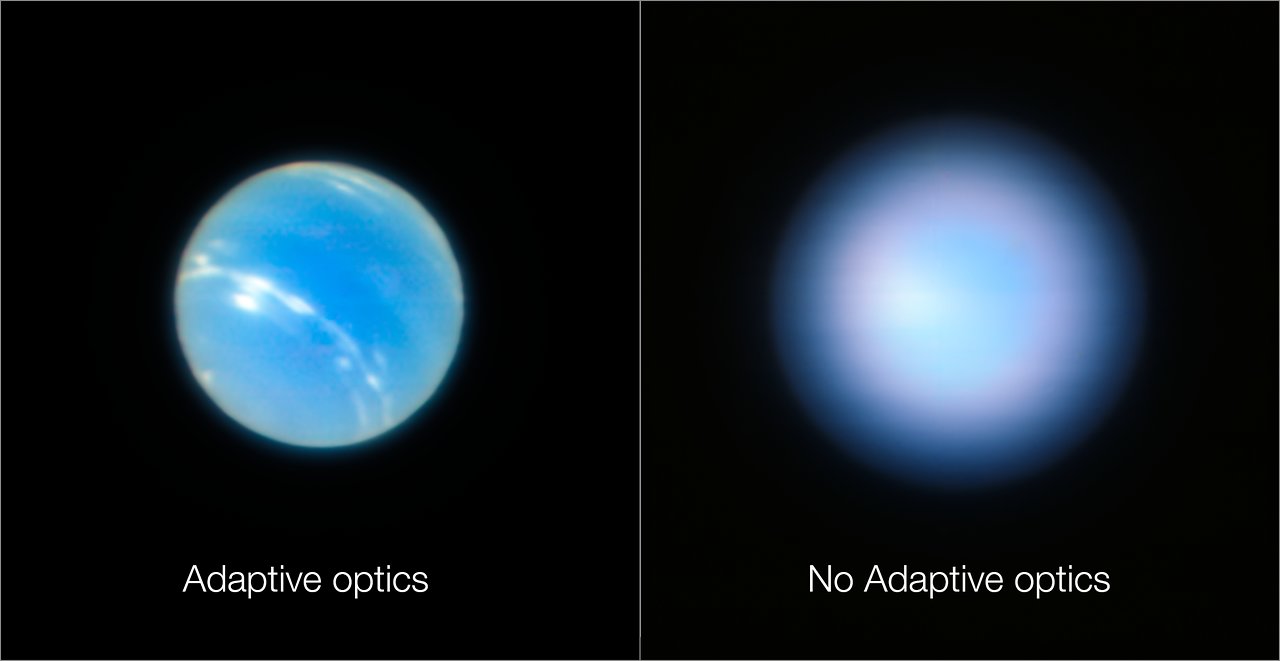
This is where AO comes in. Deforming the mirror to counterbalance distortion in the atmosphere was first proposed in 1953. At the time, there was no analog or digital computer fast enough to analyze optical distortion and drive the required counter-distortions quickly enough. Beginning in roughly the 1990s, computers with sufficient capability came to the commercial market. Moving the entire surface of a 20- or 30-foot mirror of a telescope like GMT or Subaru would be difficult. So the AO system is built into a secondary mirror that relays light collected and reflected by the primary mirror and sends it toward the various camera systems that record images.
The small diameter of the secondary mirror makes it faster and easier to warp. Here’s how. The mirror-warping process is split into the “muscle” and the “brains.” The flexing muscles can be built in a few ways, all of them either optically or mechanically change the mirror’s shape. The most common mechanical solution is to mount a field of hundreds, even thousands, of small pistons to the back of the mirror. By driving the pistons forward or back, the surface of the mirror can be moved closer or further from the incoming light.
Alternatively, there are optical methods: either a thin liquid crystal layer mounted in front of the mirror, or a thin deformable fluid layer which slows the light. Because these liquid crystal and fluid layer systems attenuate light (reduce its intensity), treat different colors differently, and are slower to change, the mechanical piston systems are generally preferable, and most common.
Once you’ve got a field of pistons mounted to your mirror, you need a computer brain to command them to flex at the right times, using one of two methods. The first — modal optics — is based on a set of basic mathematical functions that can be combined to produce any possible aberration (optical distortion). The most simple of these functions is to move the entire mirror up and down, followed by “tip” and “tilt” and other functions of increasing complexity.
The aberration of the image can be decomposed (separated) into the sum of a large number of overlapped simple modes: hence “modal” optics. The computer crunches a calculation to set the most accurate piston positions, and uses comparison with an artificial “guide star” to determine the ideal balance of modes and bring the observed object into sharp focus.
Whereas this modal approach tackles the entire field of view at once, the second method — zonal optics — divides up the area to conquer piece-by-piece. The computer analyzes the blur of the image as the result of smearing out one image, rather than as a combination of aberration modes. It then tilts each zone of the mirror slightly, to move the image it produces toward the center. As individual overlaid images converge, a sharp shape comes into focus. There are additional tricks to this method, including vibrating the mirrors to find the proper height adjustment needed to counterbalance the change in position from the tilting effect. (You can read a scientific paper reviewing the broad details and referencing the more technical sub-problems behind how all of this is done here.)
When a good AO system is up and running, it can nearly eliminate atmospheric blur, bringing telescopes up to a resolution of something like 0.02 to 0.06 as. This improves the resolution horizontally and vertically by a factor of ten or greater, making an image literally hundreds of times sharper. Rather than belabor the numbers, we can let the results speak for themselves:
